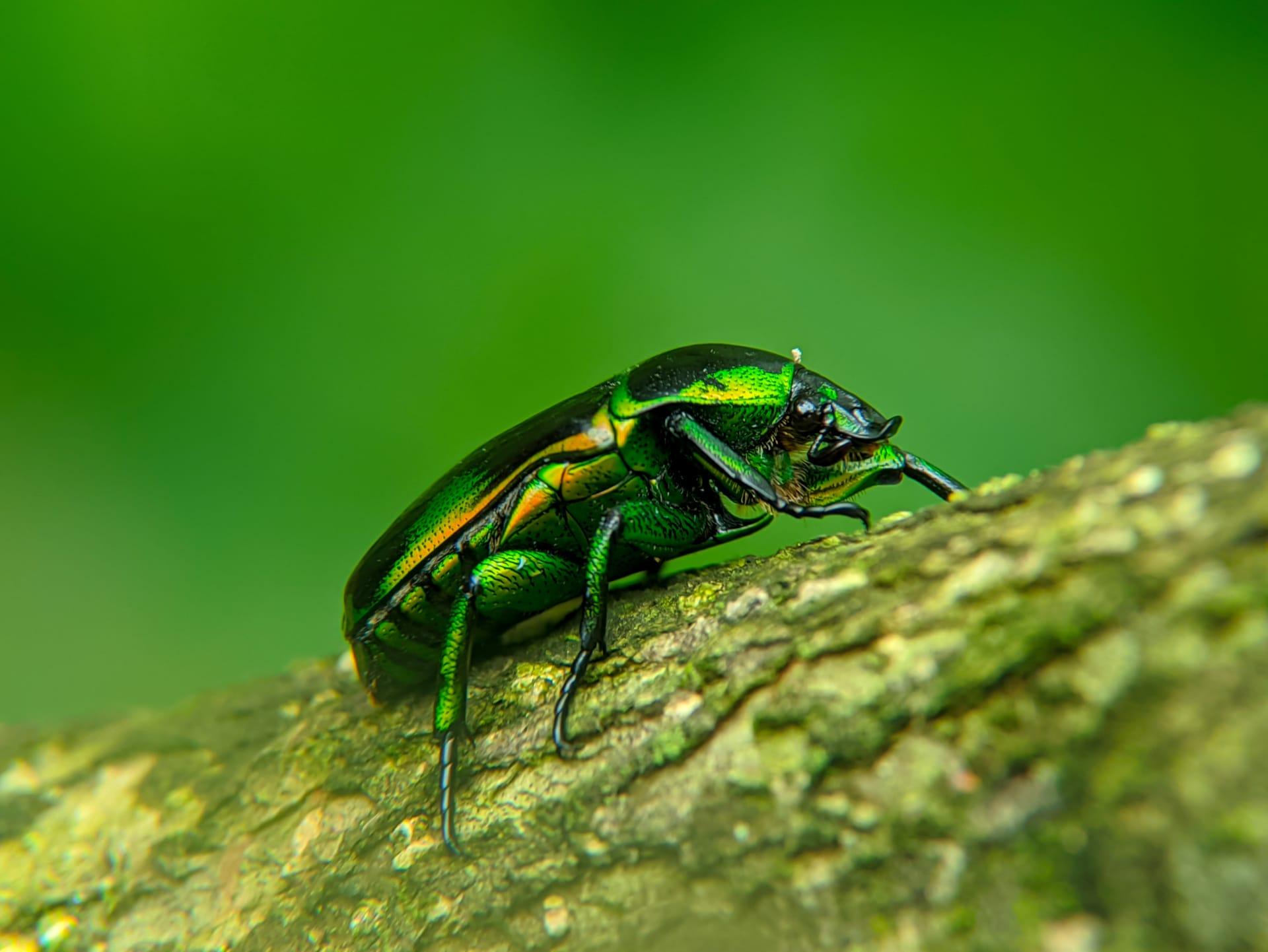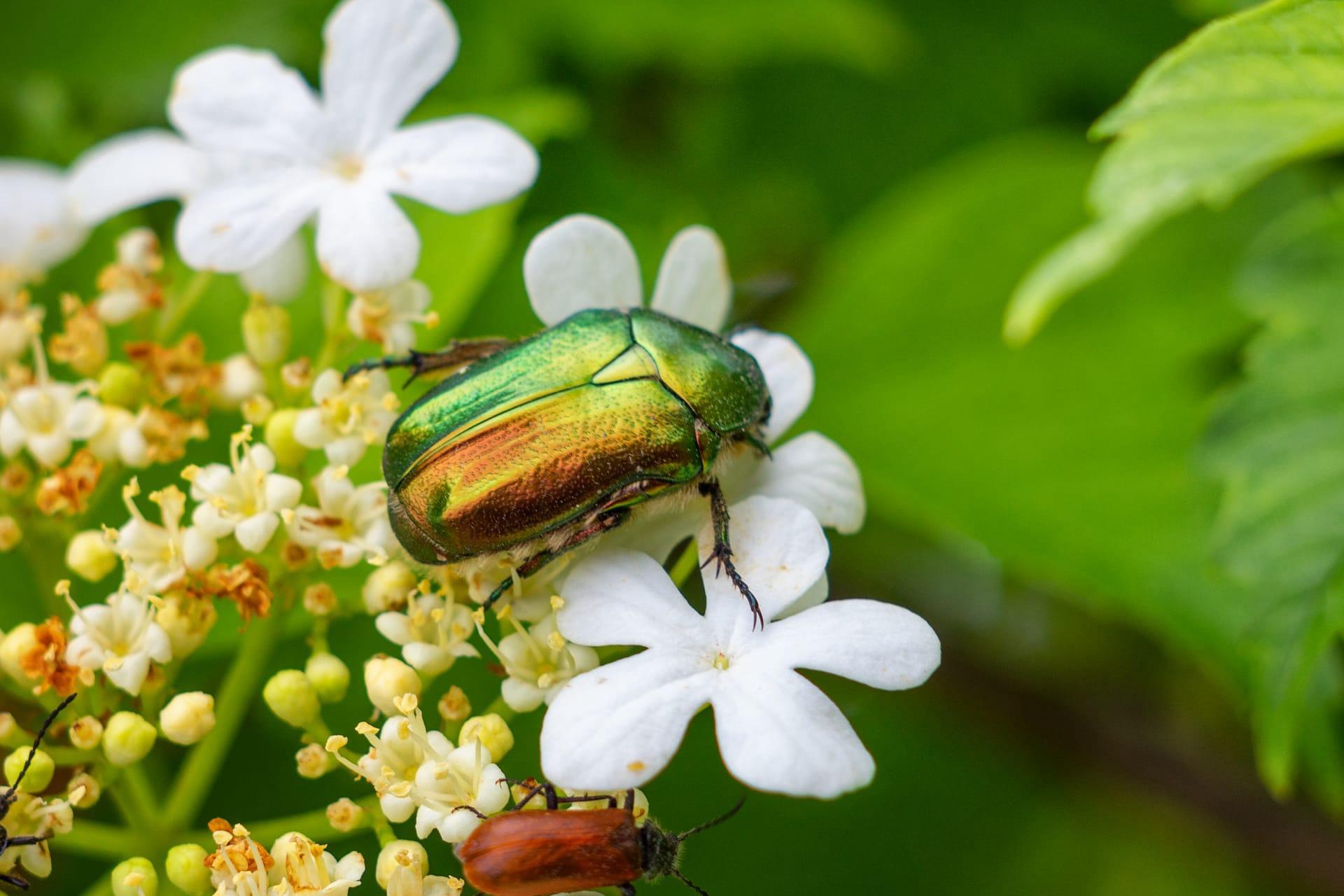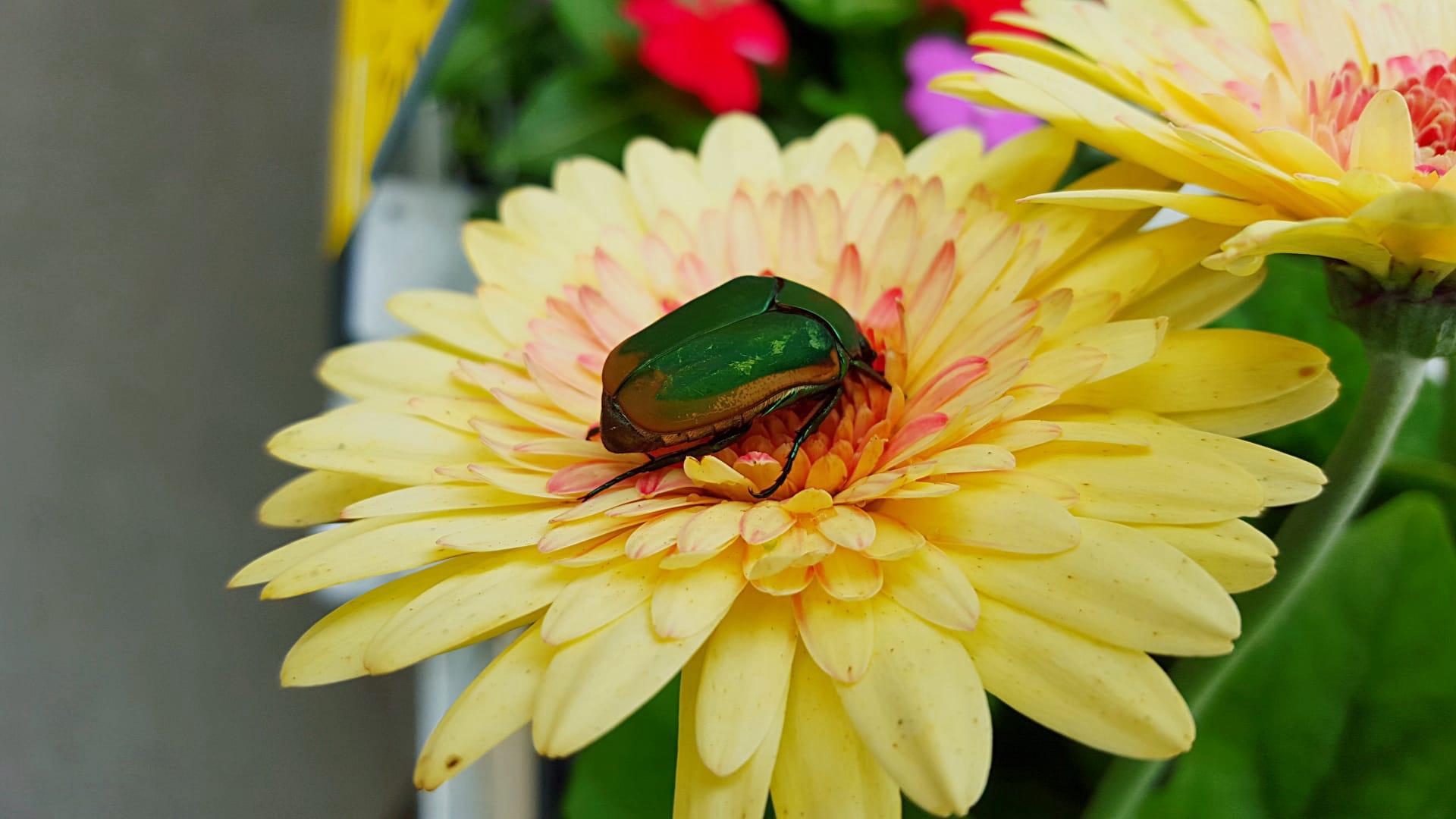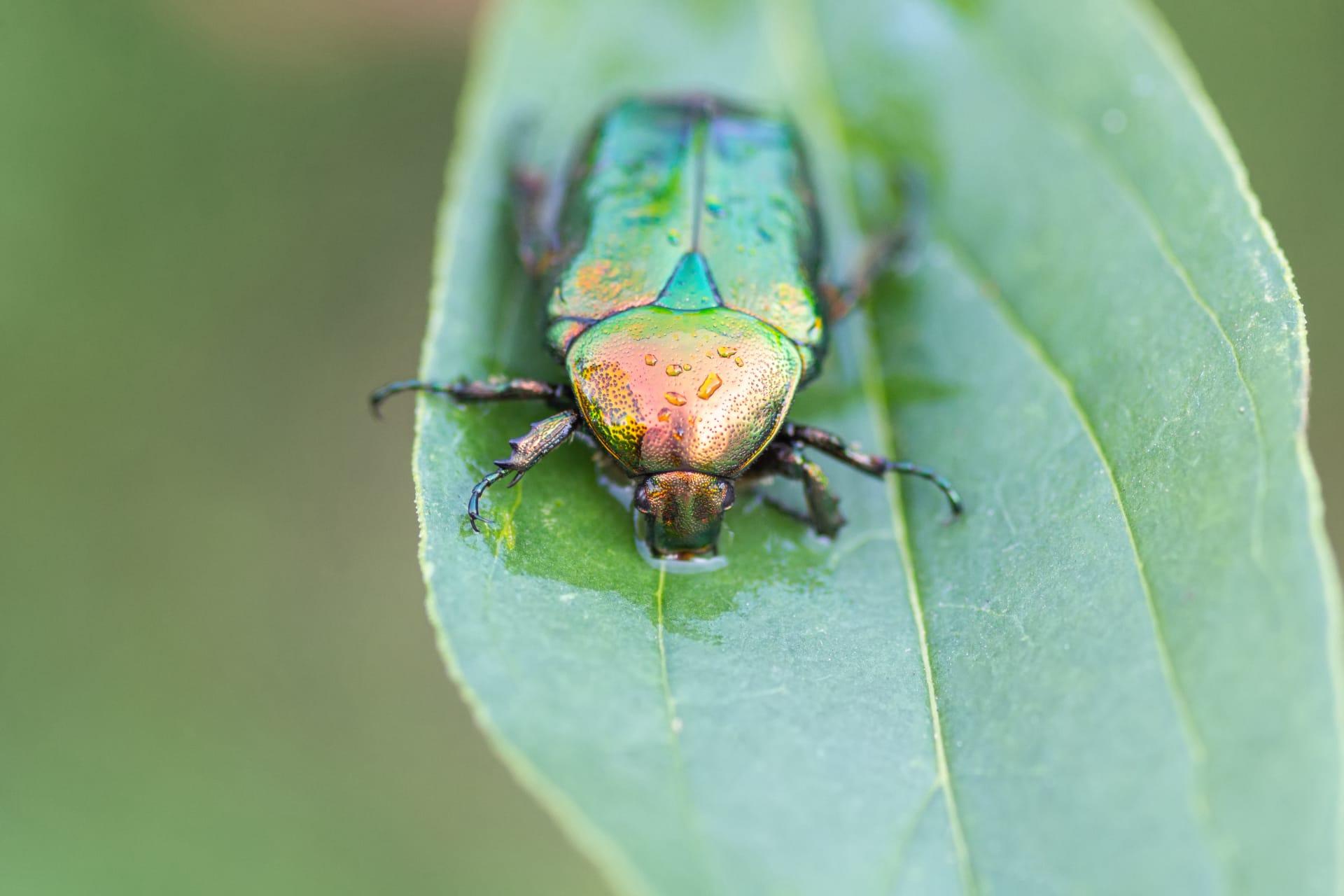Green June Beetle Characteristics
- Home /
- Mini Encyclopedia /
- Animal /
- Green June Beetle Characteristics
1
The Green June Beetle, scientifically known as Cotinis nitida, is a fascinating creature with a robust physique. This beetle, typically found in the eastern United States, boasts an iridescent, metallic green body with occasional golden hues. Adult beetles are relatively large, measuring around 0.8 to 1 inch in length. In terms of lifespan, these beetles have a brief adult life, lasting only about one year, with most of this time spent in the larval stage underground.
One of the most remarkable organs of the Green June Beetle is its set of wings. Unlike many other beetles, the Green June Beetle’s wings are not hidden under hard protective covers. Instead, their wings are exposed, allowing for a quicker takeoff. These wings are incredibly strong and versatile, enabling the beetle to fly with agility and speed. Their flight is often compared to that of a bumblebee, buzzing loudly as they clumsily maneuver through the air. This unique wing structure and flight capability play a crucial role in their survival, aiding in quick escapes from predators and efficient travel for feeding and mating.

2
Question: What attracts Green June Beetles and why are they often seen swarming in certain areas?
Answer: Green June Beetles are primarily attracted to ripe fruits and decaying organic matter. This is because they feed on the sugars and nutrients found in these sources. During the summer months, particularly in June and July, these beetles are often seen swarming in areas where these food sources are abundant. Orchards, vineyards, and gardens are common hotspots. Their attraction to ripe and decaying fruit is not just for feeding; it also plays a role in their mating rituals. The swarming behavior is a combination of feeding frenzy and a gathering for potential mates, making these areas critical for their life cycle.

3
The movement characteristics of the Green June Beetle are quite distinctive. They are known for their awkward, buzzing flight, which is quite loud and often draws attention. Despite their seemingly clumsy air maneuvers, they are surprisingly agile in avoiding obstacles and predators. On the ground, these beetles are less graceful. They move in a rather uncoordinated, wobbly manner and are more vulnerable to threats.
In terms of feeding habits, Green June Beetles are primarily frugivores. They are drawn to a variety of fruits, including peaches, berries, apples, and grapes. They use their strong mandibles to chew through fruit skins and consume the sweet, juicy insides. Interestingly, these beetles also play a role in the ecosystem by consuming and breaking down decaying organic matter, thus contributing to nutrient cycling in their habitats.

4
The Green June Beetle thrives in environments that offer abundant food sources and suitable conditions for breeding. They are commonly found in areas with rich, well-drained soils, which are ideal for their larval development. These beetles are prevalent in orchards, vineyards, and gardens where fruits are readily available. They prefer warm, temperate climates and are most active during the warm summer months.
Reproduction is a critical aspect of the Green June Beetle's life cycle. Mating occurs in mid-summer, often coinciding with their swarming behavior around food sources. Females lay eggs in the soil, which hatch into larvae. These grubs are C-shaped and can be up to 2 inches long. They live underground, feeding on decaying organic matter and plant roots for almost a year before pupating and emerging as adults. This lifecycle contributes to their role as both a pest, due to root damage in larval stages, and as a decomposer in the ecosystem.

5
Book: "The Lustrous World of Beetles" by Dr. Emily Harrington. Published in the USA in 2019, this book delves into the fascinating world of beetles, with a special focus on the Green June Beetle. Harrington, an entomologist, combines scientific facts with engaging narratives to explore the life cycle, behavior, and ecological significance of these insects. The book is renowned for its detailed descriptions and vivid photography, making it both informative and visually appealing.
Book: "Insects of the Orchard" by Samuel Richards, published in the United Kingdom in 2015. This comprehensive guide covers a variety of insects found in orchards, including a detailed chapter on the Green June Beetle. Richards, a seasoned horticulturist, discusses the beetle's impact on fruit crops, its behavioral patterns, and management strategies. The book is praised for its practical advice, making it an essential read for farmers and garden enthusiasts interested in sustainable pest management.